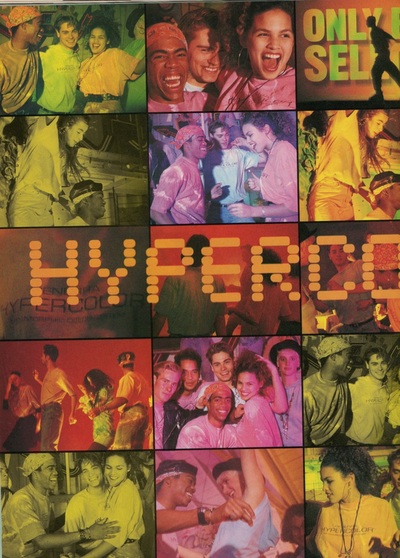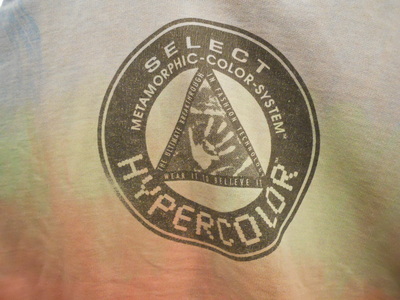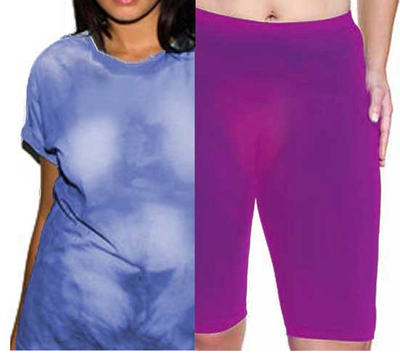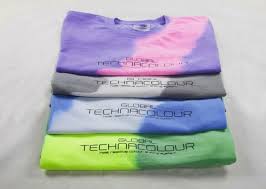|
So as summer approaches, tis' the season of sweat stains. If you're sick of bleaching your deodorant pit-stained t-shirts and wife-beaters; Hypercolor is for you. Embrace your body heat! Hypercolor was brought to us by Generra Sportswear, a Seattle based company who monopolized the Japanese innovation of thermochromatic pigment. Matsui Shikiso Chemical fabricated the pigment which when applied to fabric generates color changes denoted as hypercolor. The most amazing thing about Generra Sportswear is that between February and May of 1991 they sold $50 million in product, yet in 1992 went bankrupt. Allegedly it was due to their failing underwear and lingerie line. Fortunately or unfortunately these color changing underwear never fully caught on.
Thermocromatic pigment is essentially the same thing used to make mood rings. The magic liquid crystal juice is taken from fallen meteorites and moon dust. In other words you can think of Hypercolor as a mood ring for you body. This makes the human experience even more evident, so a woman's nipple not only get's hard but changes color, and a man's erect penis lights-up. Showing hey they're horny or have a sweating problem. Hence why Hypercolor's "sportswear" failed. Now if only hypercolor ventured into the home such as color changing sofas and carpets tracking footsteps and sitting. Another downfall of hypercolor fabric is it's lack of luster. After one harsh wear, wild wash, and or ironic ironing session; poof the pixy dust or thermochromatic pigment is gone. So rather than becoming a chameleon or wearing your emotions literally on your sleeve, maybe Fruit of the Loon and Hanes is the way to go.
0 Comments
Leave a Reply. |
LAJ
100 Objects of Popular and Material Culture is an blog exploring the manifestations of human consumption and commodity-ization. The purpose of this experiment is to explore material and popular culture in contemporary society by using objects and concepts to prompt wider questions and reflections. So by emulating The British Museum's and Neil MacGregor's format of A History of the World in 100 Objects I plan to satirically analyze and reinterpreted 100 material culture objects over the course of 2014. Material Culture is the study of our culture's consumption of stuff; namely the manifestation of culture through material productions where people's perceptions of objects is socially and culturally dependent. With this, objects reflect conscious and unconscious beliefs on the the individuals who fabricated, purchased, or used them, and by extension the society where they live. So examining materiality, cultural truths and societal assumptions may be discovered. As anthropologist Arjun Appaduai states "in any society the individual is often caught between the cultural structure of commodity-ization and his own personal attempts to bring a value and order to the universe of things." Objects and commodities make up a much larger symbolic system consisting of want and need, socio-economic status, fashion, etc. Often times form follows function whether the commodity, market, and or consumer forever evolve around one-another. Philosopher Pierre Bourdieu's theories of capital flow full circle; where regardless if you are a minimalist or a hoarder the world is made up of things and everyone will leave their footprint on the earth. So by humorously analyzing marketed objects and concepts, hopefully this blog will provide further incite into ideas of over-consumption, a disposable society, consumerism vs. anti-consumers, planned obsolescence vs. sustainability, as well as the greater good of mankind and future generations. Archives
March 2015
Categories |




 RSS Feed
RSS Feed